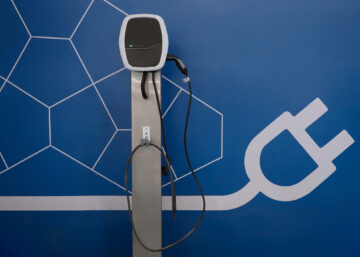Marketers excel at problem solving. That skill is more valuable than ever in the electric vehicle market, where nagging problems such as the need for more batteries, the high cost and the challenge to keep them charged affect everyone. The EV industry looks for nimble solutions to both market-wide issues and those in their particular segments. Out-of-the box ideas can keep drivers on the road and manufacturing and assembly lines running. Here are five concepts adopted by innovators in the EV battery market that might spark some of your own creativity, whatever industry you’re in. 1. Stay a step ahead of customer needs: The fear of running out of charge on the road still keeps many people from buying EVs. Back in 2010, AAA recognized that concern. It had the idea that EV charging should be as mobile as the cars themselves. That year it began expanding its famed road-side service to include mobile charging in a pilot program in six cities across the country. As the need increased over the years, AAA took what it learned and launched a new pilot in 14 cities at the end of 2022. AAA retired its five original prototype mobile charging trucks and created new, more powerful versions. The association will add locations as needed based on market studies, according to a December 1, 2022 news release. In Portland, Oregon, according to KGW8-TV, AAA now uses new Ford F-250 trucks that function as smart generators. The driver’s EV can be plugged into the truck and 30 minutes later, the stranded motorist has enough charge to get to a charging station or home. 2. Meet customers where they are at, literally: The AAA program leaves plenty of room across the country for others like Lightning eMotors of Loveland, Colorado, to pursue mobile charging solutions for commercial fleets. Lightning eMotors provides commercial and electric vehicles for fleets. To support its customers’ needs, its mobile charging solution, Lightning Mobile, delivers charging units on a flat-bed truck. The mobile chargers quickly charge trucks, vans, buses and cars at remote locations, special events and depots. Lightning Mobile supports its customers by making it possible for their EV fleets to go anywhere and work anywhere without getting stranded. Its energy storage capacity ranges from 210 kWh to 420 kWh, and the charging unit has up to five CCS-1 outputs, which can simultaneously charge at up to 80 kW. 3. Be agile: Battery packs aren’t just for George Jetson’s family anymore. Companies like SparkCharge of Somerville, Massachusetts, are creating mobile battery packs that they sell to rental-car agencies and other companies with EV fleets. As described in the July 24, 2023 Wall Street Journal Energy Report, SparkCharge began its journey to creating its Roadie Portable DC fast charger in 2018. The battery pack, the first of its kind according to SparkCharge’s website, is grid-free, lightweight, modular and immediately deployable without any fixed infrastructure. Importantly, Roadie Portable is fast. SparkCharge also simplifies things for its customers by offering mobile Charging-as-a-Service. The turnkey EV charging service eliminates its customers’ installation, permitting and upfront costs associated with fixed infrastructure. 4. Fill in market gaps for customers: Xos, a maker of electric trucks based in Los Angeles that was also featured in the July 24 Wall Street Journal Energy Report, came up with a customer-friendly solution when it realized buyers of its first trucks delivered in 2018 lacked necessary charging infrastructure. It can take up to two years to set up charging infrastructure for fleets, get it fully operational and have enough power available from the local utility to make it work. To fill the gap, Xos offers mobile charging. Its products include its recently released second-generation Xos Hub, a rapidly deployable trailer-mounted charging station with an energy capacity of 390 kWh. That’s a 60% increase from the first version and means faster charging times for the EVs plugged into it. The Hub’s five CCS-1 charger heads are compatible with both commercial and passenger EVs and can charge up to five vehicles at once. The Hub also helps customers reduce electricity costs. It includes a telematics device and Xos software that help determine the best charging times based on off-peak and peak hours. 5. Maximize customer investments: EV batteries are expensive. Not knowing the status and condition of a battery can be costly, whether you’re keeping the EV or selling it. According to Cox Automotive, based in Atlanta, the battery pack is the single most expensive part of an EV, accounting for 30 to 40% of the total cost of the vehicle. To help customers maximize their investment in a battery, Cox Automotive launched a new mobile EV Battery Health Tool in January 2023 that is a VIN-specific battery grading system. The easy-to-use tool measures current battery condition, historic battery data (times, temperatures and types of charges) and performance. The data is then used by Cox’s patented health algorithm to produce a VIN-specific battery score ranging from 1 to 5. That score, along with information on the battery’s current estimated range, will be included in the EV Battery Health Report. Cox launched a pilot program in 10 locations across the county: Pennsylvania, Southern California, San Francisco, Riverside CA, Nevada, Dallas, Phoenix, Seattle, Nashville and Portland. With the anticipated influx of used EVs entering the market, the Cox Automotive battery health score is designed to help create confidence and transparency at the point of sale. It’s your turn. Tell us about some of your creative problem-solving ideas. We’d love to put the spotlight on them.Energy
Getting a charge out of EV battery problem solving: Five ideas to spark your marketing creativity

